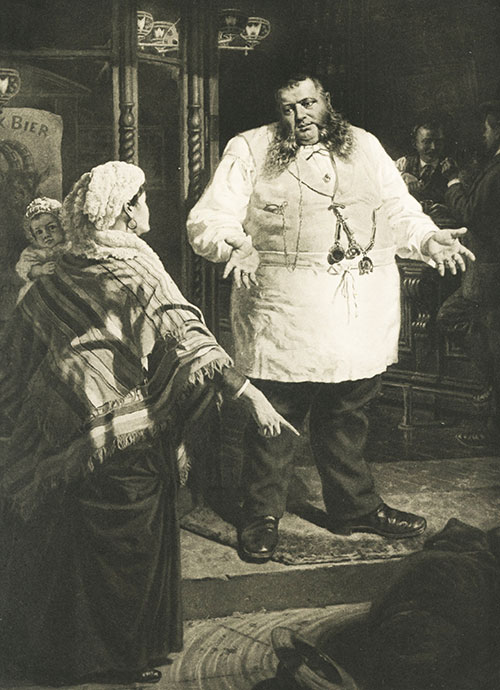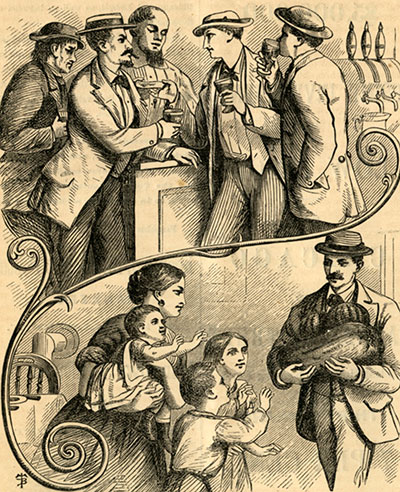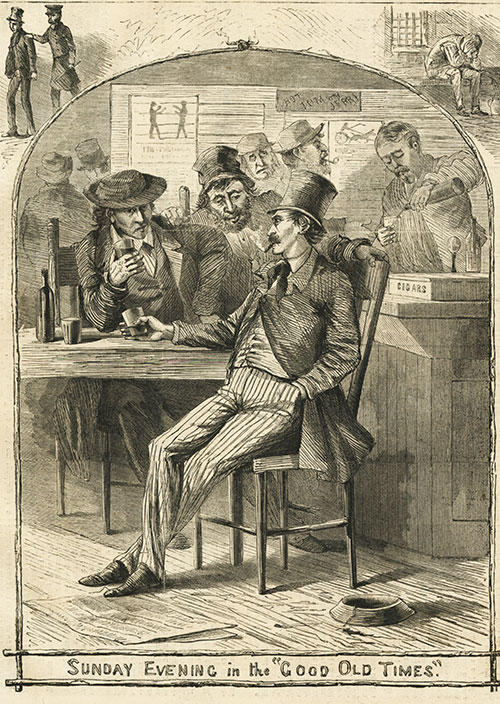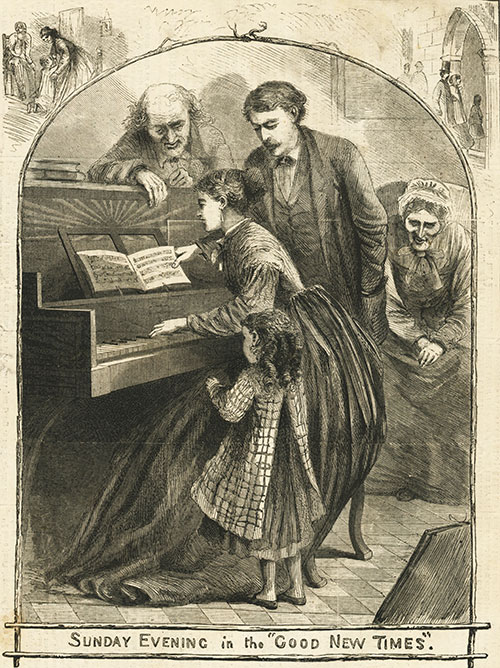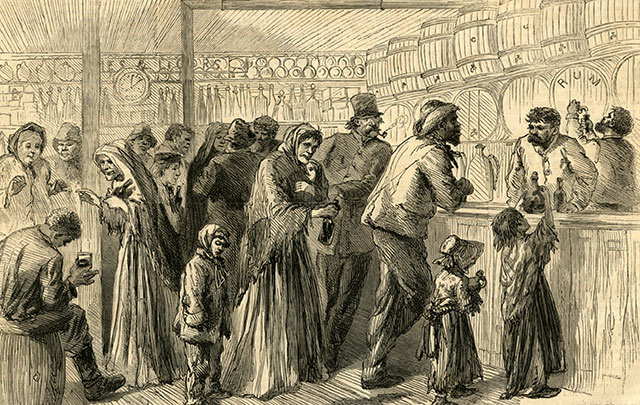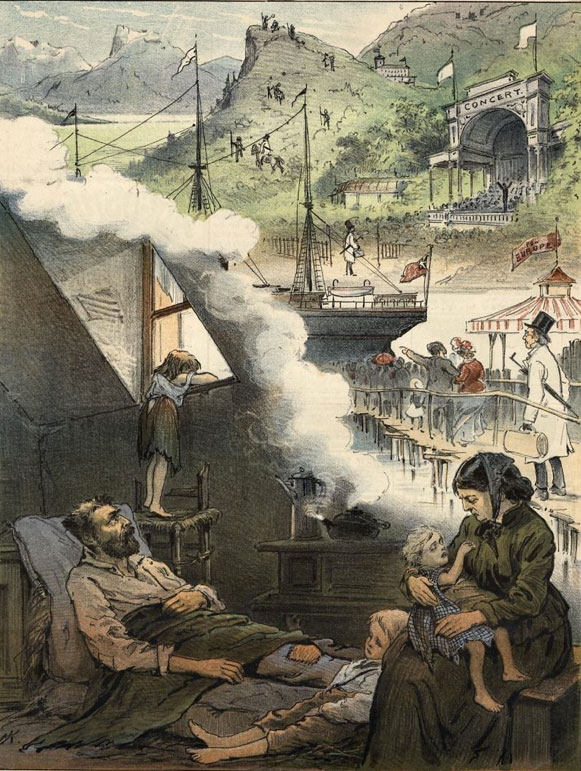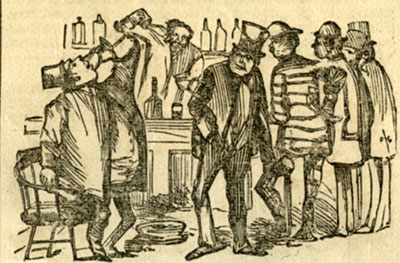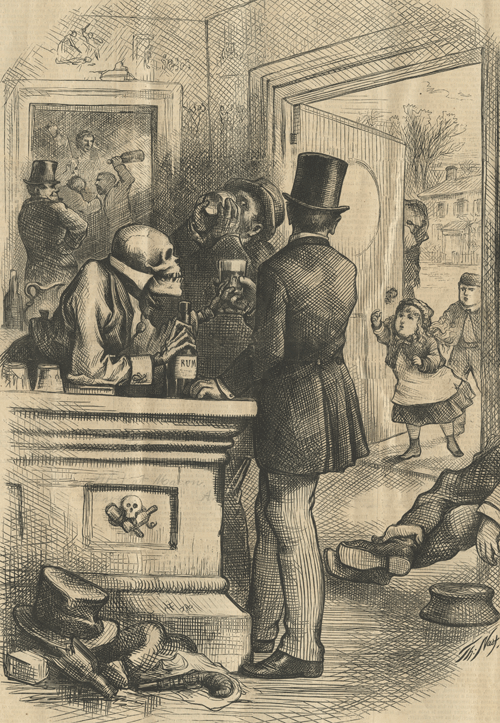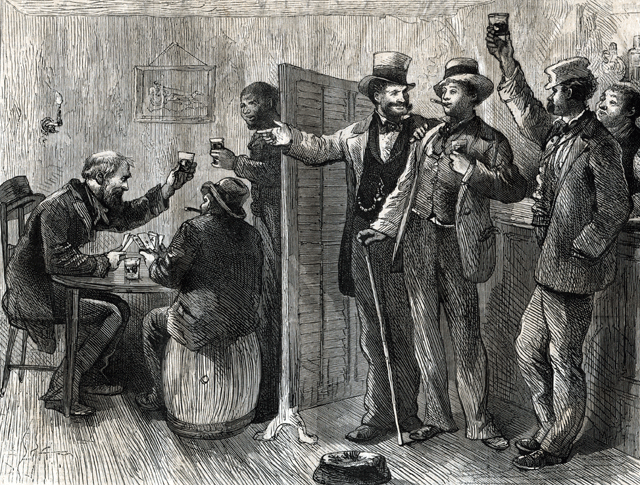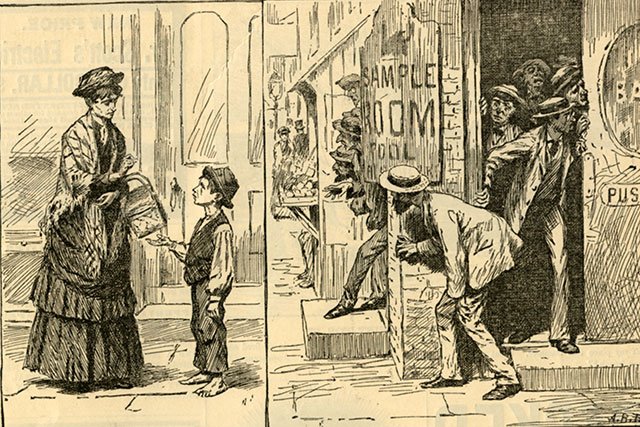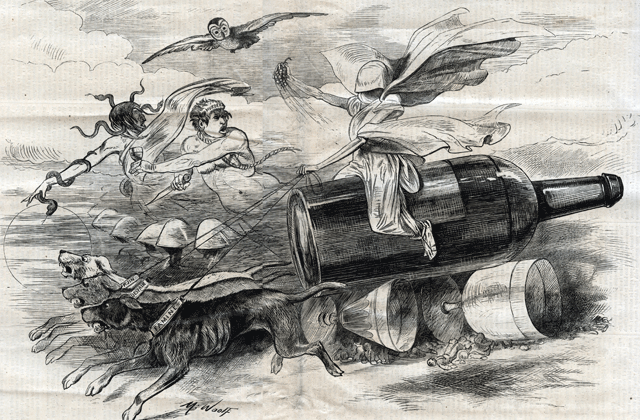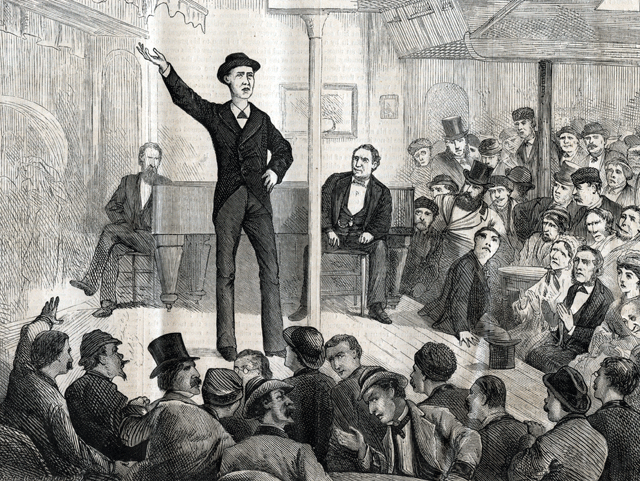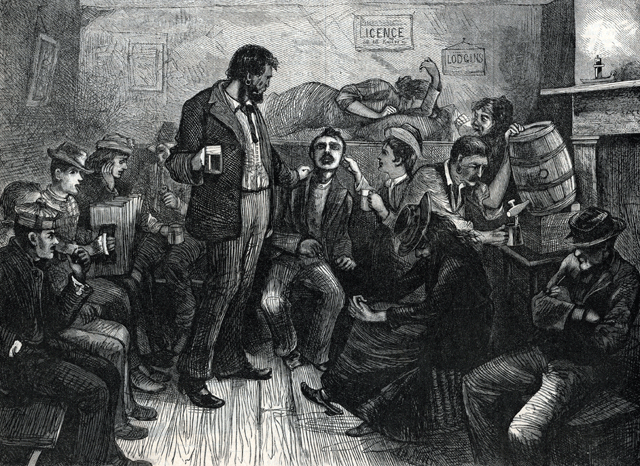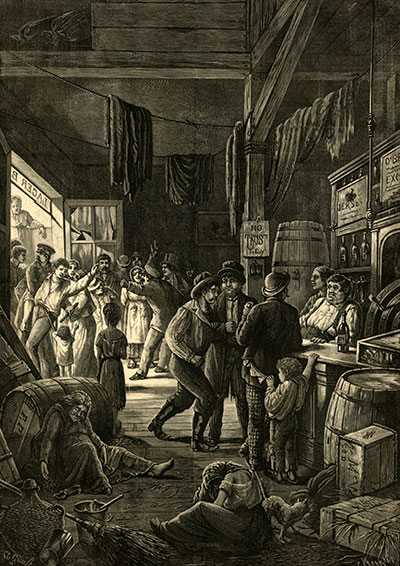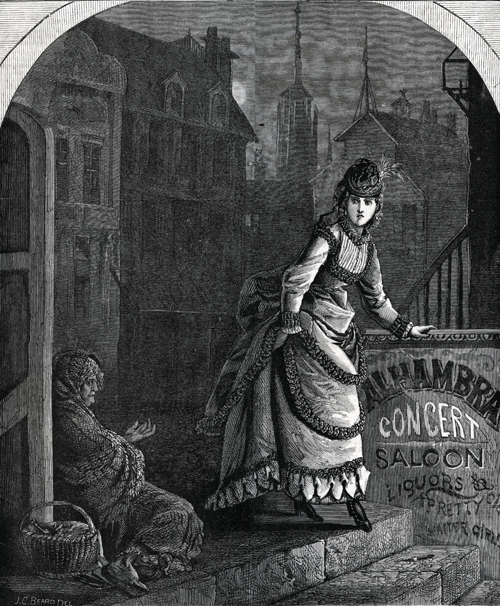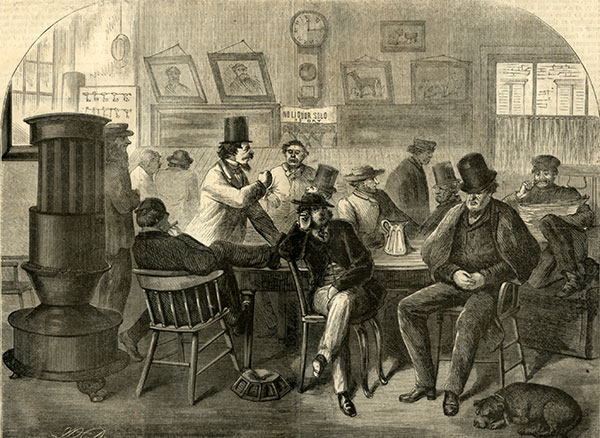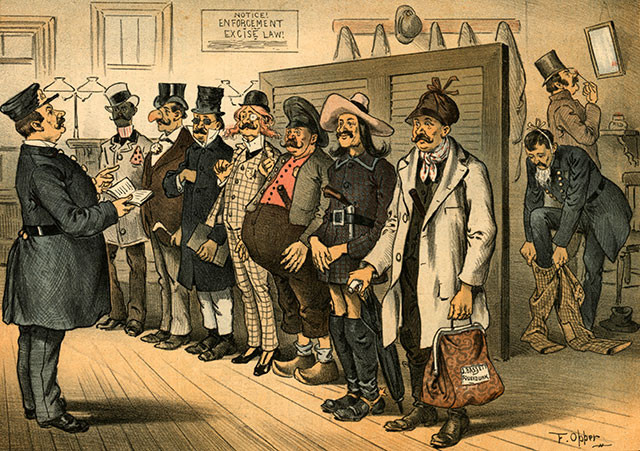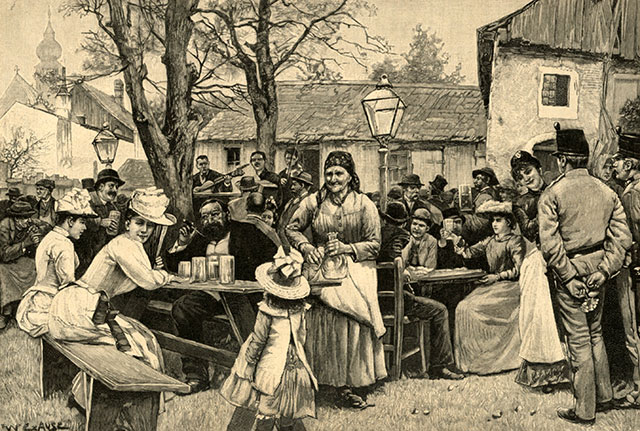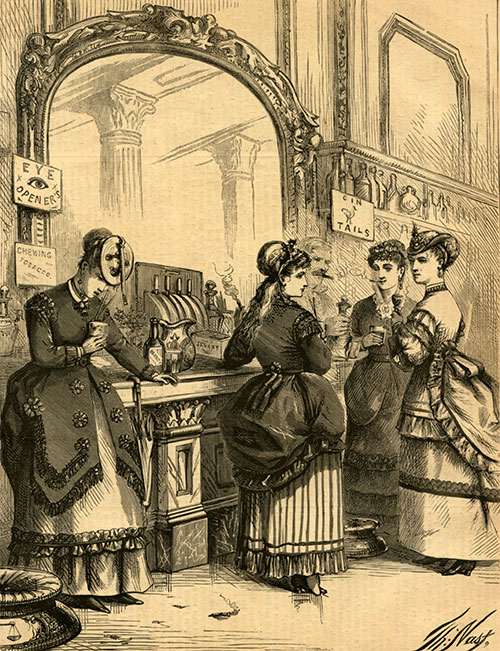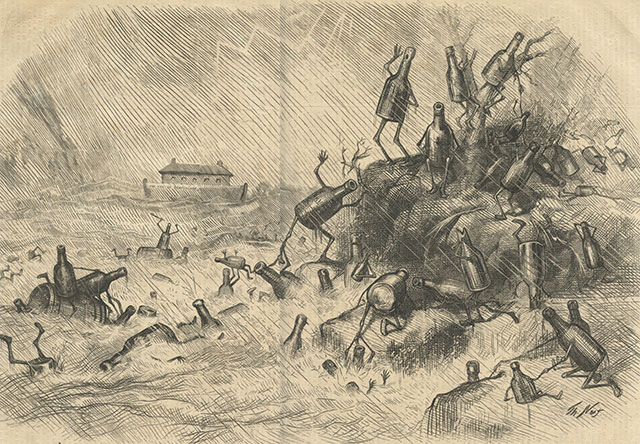|
Illustrated Christian Weekly New York Saturday December
19, 1874, collection of Maggie Land Blanck, April 2012
"COMING EVENTS CAST THEIR SHADOWS BEFORE" - WHAT SUNDAY CONCERT LEADS TO
Temperance leaders were trying to prohibit drinking on Sundays.
The German American population liked
their Sunday afternoons in the
German Beer Gardens, drinking and singing with their families. The German Beer
Gardens took to calling these
Sunday afternoons "Sunday Concerts" or "Sacred Concerts".
This illustration alludes to the dangers lurking to a young woman who
might spend her afternoon in the Beer Gardens and then end up a
destitute beggar on the street with her bottle tucked in her basket.
The Alhambra Saloon was at 14th Street opposite Tammany Hall.
See Kleindeutschland
for more images and information on the German experience in Lower Manhattan
See Beer Halls
"Sacred Concerts".
Concert Saloon Licenses 1899:
-
Charles Faas, 226 and 228 West One Hundred and Twenty-fifth street.
- James McGarann, 2378 Third avenue.
- New York Maennerchor, 203 and 207 East Fifty-sixth street.
- Ella Petersen, 284 Eighth avenue.
- William Weiskopf, One Hundred and Forty-eighth street and Bergen avenue.
- Rosalie Meyer, 207 Bowery.
- Emil Schwab, 208 East Houston street.
- Louis Gross, 14 Stanton street.
- William O'Brien, Madison Square Garden.
- Ernest Friede, 185 Chrystie street.
- George J. Kraus, Volks Garden, 231 and 233 Bowery.
- Charles Krumm, 167 Chrystie street.
- Max Gombossy, 152 Stanton street.
- Louis Kessler, 27 Bowery.
- Ernest Friede, 185 Chrystie street.
- Louisa Kessler, 27 Bowery.
- H. C. Miner, 167 and 169 Bowery.
- Samuel R. Howard, Jr., 2378 Third avenue.
- Max Gombossy, 152 Stanton street.
- F. Steen, 60 Stanton street.
- Louis Gross, 14 Stanton street.
- George W. Sauer, Atlantic Casino, One Hundred and Fifty-fifth street and Eighth avenue.
- Charles Krumm, 167 Chrystie street.
- Henry Schork, 5 Battery place.
- Emil Schwab, 208 Houston street.
- Alfred Reichelt, New York Amusement Company, 115 West Twentythird street.
- Thomas Conway, 312 Eighth avenue.
- New York Maennerchor, 203 and 207 East Fifty-sixth street.
- William Schwab, 2387 Third avenue.
- Charles L. Kessel, One Hundred and Fifty-fifth street, west of Eighth avenue.
- George J. Kraus, 231 and 283 Bowery.
- Bertrand Meyer, 207 Bowery.
- Adolph Herrmann, 290 Eighth avenue.
- William Kramer, 50 Bowery.
- Jacob Rebzer, 460 East Fifty-seventh street.
- Jacob Blank, 134 and 136 East Thirteenth street.
- Jacob Hirsch, 114 East Thirteenth street.
- Ernest A. Jurgens, 55 West Twenty-third street.
- Adam Gander, 139 Eighth street.
- William Eiseman, 294 Bowery.
- Frederick Steen, 60 Stanton street.
- George J. Kraus, 23l and 233 Bowery.
- Alfred Reichelt, New York Amusement Company, 115 West Twentythird street.
- Bertrand Meyer, 207 Bowery.
|
